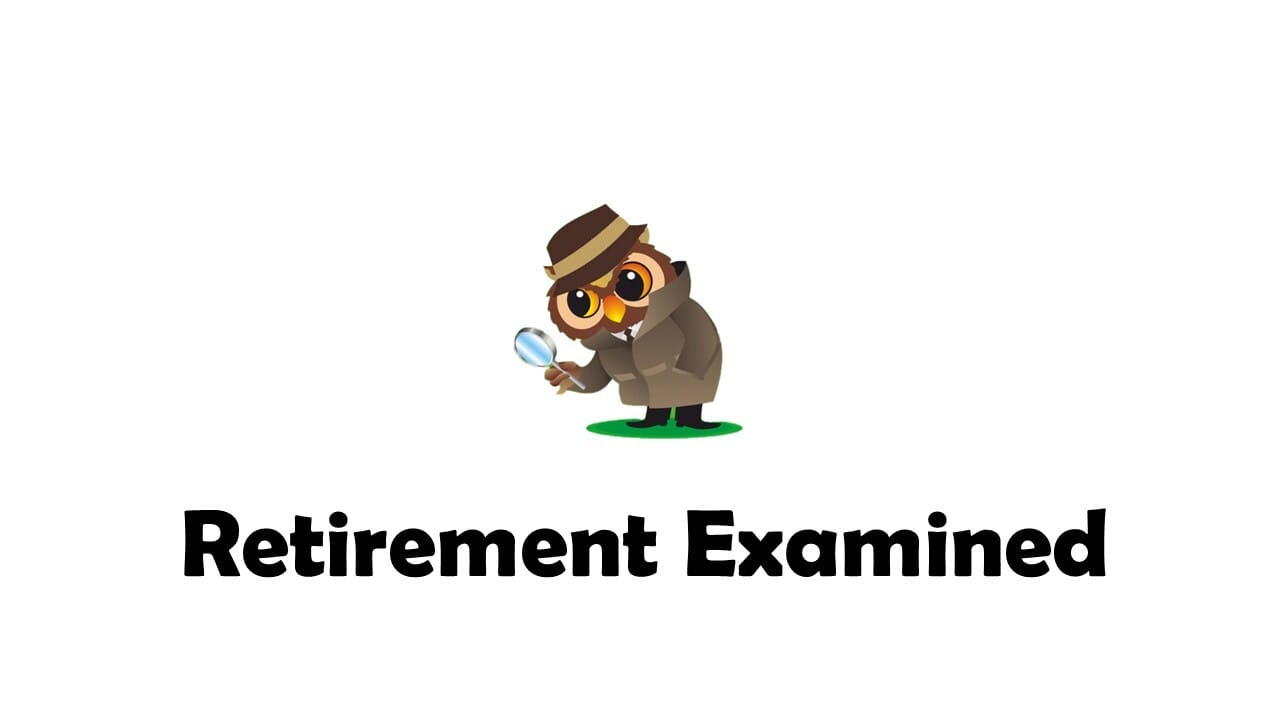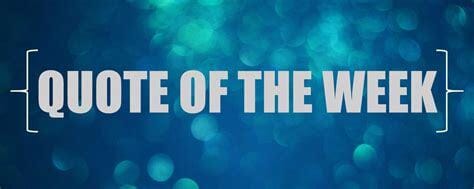- Retirement Examined
- Posts
- Retirement Examined
Retirement Examined
5-Minutes of Breakthrough Secrets: Happy, Fulfilling Retirement

The weekly email that keeps you up to date on exciting Retirement topics in an enjoyable, entertaining way for free.
Beyond the Balance Sheet: The Overlooked Retirement Levers That Don't Cost a Dime
by Eric Seyboldt, MBA

Everyone talks about the money. The nest egg. The 401(k). The “number” you need to retire safely. But most people never talk about the other side of retirement—the non-monetary levers. And make no mistake: they’re powerful. In fact, these hidden levers can make or break your retirement, regardless of how much you've saved.
What happens when the paychecks stop but the days stretch on? When your identity as a professional disappears overnight? When you're no longer busy—but also no longer needed? The financial side of retirement is only half the equation. The rest is harder to measure, but it matters more than most people realize.
The Psychological Shift: Retirement Without a Role
When a career ends, something else quietly unravels in the background: your sense of purpose. Work doesn’t just pay the bills—it gives structure, status, identity. The sudden loss of all that can trigger depression, anxiety, even a sense of invisibility.
Retirees who thrive tend to find something new to stand for. Volunteering, teaching, mentoring, or even launching a second act—these are more than hobbies. They’re replacements for what was lost. And they’re essential. A retiree with purpose ages slower, feels better, and lives longer. That’s not just feel-good talk—it’s backed by hard data from behavioral economics and gerontology.
You can’t buy connection. And as it turns out, you can’t retire well without it. Isolation in retirement is linked to everything from cognitive decline to early death. A Stanford study found that strong social ties were more predictive of longevity than cholesterol levels.
Community organizations, religious groups, volunteer networks—these are the “social IRAs” that pay dividends when you need them most. Especially for single retirees, building a social infrastructure is non-negotiable. It’s your true safety net when systems fail.
Health: The Great Compounding Asset
Forget mutual funds—your body is the real compounding machine. A small investment in daily physical activity, preventive care, and nutrition in your 50s and 60s pays off in decades of independence later. Without health, every retirement dream collapses under its own weight.
And now, with breakthroughs in medical science like GLP-1 drugs reshaping longevity and mobility, the future of aging is changing. But access, cost, and long-term effects remain open questions. The retiree of the future may need to navigate both biology and bureaucracy to stay ahead.
Mental Stimulation: The Insurance Policy Against Decline
Retirement doesn't mean mental shutdown. In fact, your brain needs more exercise than ever. Continued learning—whether through formal classes, reading, or learning new skills—keeps the mind sharp. Institutions are waking up to this. Many now offer courses specifically for retirees, combining education with critical social contact.
Lifestyle Geography: Where You Live Determines How You Age
It’s not just about downsizing or warm weather. It’s about access. Access to healthcare. Access to family. Access to meaning. Where you live in retirement shapes your entire trajectory. High-cost states like California might offer sunshine and services—but the trade-offs are real. Retirees need to weigh climate, community, cost, and care with ruthless honesty.
Routine: The Quiet Pillar of Mental Stability
Time in retirement expands, and for many, that’s a trap. Too much unstructured time invites boredom, depression, and a feeling of drifting. Retirees with daily structure—whether it’s morning walks, scheduled meet-ups, or even part-time work—report better emotional stability and higher satisfaction. Freedom without rhythm is a dangerous illusion.
Legacy: Building Something That Lasts
Aging raises the oldest economic question in the book: What do you leave behind? And here, it’s not about dollars. It’s about impact. Mentorship, writing, storytelling, creativity, faith—these are the legacies that outlive you. They’re not found in brokerage accounts. They’re built in community halls, at kitchen tables, in long conversations.
Conclusion:
Retirement is not just a financial event. It’s a complete economic, psychological, and social restructuring of a person’s life. The levers that make retirement successful aren’t just found in spreadsheets—they’re found in purpose, relationships, and health.
Ignore them, and even the wealthiest retiree can find themselves adrift.
Use them wisely, and even a modest retirement can be extraordinary.
These are the real levers. And they’re free.
Reach out to us for a complimentary, 10-minute consultation call. Let's explore strategies to protect your wealth and make your retirement everything you've dreamed of—secure, fulfilling, and worry-free. Schedule a free 10-minute consultation today by calling 614-943-2265. Your future deserves the best plan, and we're here to help make it happen.
The Supply Chain Crisis Is Escalating — But This Tech Startup Keeps Winning
Global supply chain chaos is intensifying. Major retailers warn of holiday shortages, and tech giants are slashing forecasts as parts dry up.
But while others scramble, one smart home innovator is thriving.
Their strategic move to manufacturing outside China has kept production running smoothly — driving 200% year-over-year growth, even as the industry stalls.
This foresight is no accident. The same leadership team that saw the supply chain storm coming has already expanded into over 120 BestBuy locations, with talks underway to add Walmart and Home Depot.
At just $1.90 per share, this resilient tech startup offers rare stability in uncertain times. As investors flee vulnerable companies, this window is closing fast.
Past performance is not indicative of future results. Email may contain forward-looking statements. See US Offering for details. Informational purposes only.

What Banks Desperately Hope You Never Discover About Paying Off Debt
by Eric Seyboldt, MBA
Client: "Eric, a friend of mine told me it may be better for me to continue to have a mortgage instead of paying it off. What is your opinion on mortgage debt and other types of debt for someone who recently retired?"
Eric: Few borrowers ever stop to consider the origin of the word mortgage, but the etymology is revealing—and unsettling.
The term mortgage derives from the Old French mort gage, which translates literally to "dead pledge." It stems from the Latin morte (death) and gage (pledge or promise). In its original legal context, the loan was considered “dead” either when the obligation was fully repaid, or when the borrower defaulted—whichever came first.
This isn’t a metaphor. It’s legal history.
The mortgage was never designed to be empowering. It was structured to bind the borrower to a long-term financial obligation, often spanning decades, where the pledge of property rights remained in limbo until the “death” of the contract. Either the debt would be extinguished, or the lender would claim the asset.
Understanding this historical context makes one thing clear: mortgage debt is not just a financial agreement—it is a system designed with permanence, control, and legal precision. And while the word may now feel routine, its original meaning is a stark reminder of the seriousness and longevity of the financial instrument it names.
The modern credit and lending system is structured in such a way that your long-term debt obligations fuel the operating profits of banks, credit issuers, and institutional lenders. It is not accidental. It is engineered through a series of interdependent mechanisms that rely on your continued participation as a debtor. Let's walk through them precisely.
1. Amortization Schedules Work in the Bank’s Favor
Most installment loans—especially mortgages and auto loans—are structured using amortization schedules that allocate interest payments disproportionately in the early years of the loan. This means during the first several years, the majority of your payment goes toward interest, not the principal balance.
This is rarely explained with full transparency at the time of signing. Borrowers are often encouraged to refinance, which resets the amortization timeline, placing them back at square one. In doing so, banks preserve their ability to collect interest-heavy payments for an extended period, sometimes decades.
2. Credit Scoring Models Reinforce Debt Participation
The FICO scoring system is widely accepted as the benchmark for consumer creditworthiness. Yet a closer analysis reveals that its criteria are structured to encourage consistent borrowing behavior, not financial independence.
30% of your score is based on how much of your available credit you’re using.
10% rewards having multiple types of debt.
15% favors older, long-standing debt relationships.
In effect, the credit scoring model incentivizes the maintenance of revolving debt and penalizes the complete elimination of it. This model serves lenders, not consumers, and makes continued debt use appear beneficial—even when it isn't.
3. Inflation and Interest Rate Policy Benefit Lenders
Banks borrow at institutional rates that are significantly lower than consumer borrowing rates. Through fractional reserve banking, they multiply this advantage by issuing credit far in excess of their deposits. When inflation increases, interest rates rise, and banks earn more from new credit issued—especially variable-rate debt such as credit cards and adjustable-rate mortgages.
Meanwhile, households struggle to keep pace with rising prices and higher minimum payments. This creates a widening spread between institutional profit and consumer strain. Banks manage this process within risk thresholds designed to keep delinquency levels low while maximizing yield.
4. Debt as a Tool of Predictability and Control
From a macroeconomic standpoint, widespread consumer debt improves economic predictability. Consumers with significant debt obligations are less likely to make sudden changes in employment, consumption, or geographic mobility. This stability benefits both public policy planners and private financial institutions.
Many lenders and financial institutions have quietly acknowledged this dynamic in their internal risk models. While no official doctrine mandates indebtedness, the structure of credit products and employment-linked debt obligations leads to similar outcomes across large swaths of the population.
5. Prepayment Penalties and Early Exit Disincentives
In some loan agreements—especially in private lending and subprime markets—borrowers are penalized for paying off their loans early. These prepayment penalties serve no economic purpose other than to protect the lender’s expected interest income. By reducing the incentive to pay off loans ahead of schedule, the lender effectively locks in long-term profit projections at the borrower’s expense.
Such clauses are legal, but rarely emphasized. Most borrowers sign without fully understanding that early payoff can trigger additional costs.
What Can Be Done
There are effective countermeasures available for those who understand how these systems operate:
Make extra payments toward principal in the early phase of any amortized loan.
Convert monthly payments to biweekly installments. This results in one extra payment per year without increasing monthly cash flow demands.
Use the “debt avalanche” method by paying off the highest-interest debts first while making minimum payments on others.
Avoid unnecessary refinancing, especially when it extends the loan term.
Challenge the assumption that a high credit score is always the goal. For those seeking financial independence—not more credit—it may not be relevant.
Final Note
Banks are legally obligated to maximize returns for shareholders—not to help you build personal wealth. Their business model depends on interest income, and your debt is part of their revenue stream. Paying off your loans strategically, rather than on autopilot, can significantly reduce total interest paid and cut years off your repayment horizon.
Understanding this dynamic isn’t just helpful—it’s essential for anyone seeking long-term financial stability and control over their economic future.
Contact us for a free, brief 10-minute consultation. Let's explore strategies to protect your wealth and make your retirement everything you've dreamed of—secure, fulfilling, and worry-free. Schedule a free 10-minute consultation today by calling 614-943-2265. Your future deserves the best plan, and we're here to help make it happen.

Fixed annuities can be an essential component of a well-rounded retirement strategy, offering security, predictability, and efficiency in financial planning.
These are current fixed annuity rates and their durations from Top A-rated carriers (subject to change at any time, not FDIC insured):
Rates Just Popped Up! Don’t Wait To Lock These Fixed Annuity Rates In Today!
3-year: 5.25% (under $100k Deposited)
3-year: 5.35% (over $100k Deposited)
5-year: 5.45% (under $100k Deposited)
5-year: 5.60% (over $100k Deposited)
Please feel free to call Eric at 614-943-2265 if you’d like to ask any questions or request information on these fixed annuities or other retirement topics that are on your mind.

“You may never know what results come of your actions. But if you do nothing, there will be no result.”

Mahatma Gandhi
REAL ASSETS, Invest Like the Ultra-Wealthy

Invest Like the Ultra-Wealthy: Why Smart Money Is Flocking to Real Assets Like Gold—and Even Bourbon
Let’s be blunt: the old playbook for protecting retirement is broken. Inflation is creeping higher. The dollar is losing its punch. Central banks are printing money like it’s Monopoly night. And markets? As unstable as ever.
That’s why the savviest investors aren’t just watching the storm—they’re preparing for it.
They’re moving into real assets—tangible, inflation-resistant investments that don’t vanish when the market sneezes. We’re talking about gold. We’re talking about bourbon barrels. Yes, bourbon. The same elite-class asset quietly making millionaires in private circles.
These aren’t just collector’s items. They’re financial armor—hard assets that hold their ground when stocks crater and paper wealth evaporates.
And it’s not just a hedge—it’s a strategy.
📌 Gold has withstood centuries of financial upheaval.
📌 Bourbon barrels are aging assets with built-in appreciation and rising global demand.
📌 Physical assets provide something no stock ever can: ownership you can see, touch, and trade on your terms.
During market chaos, real assets don’t flinch. They thrive. History proves it. While equities tumble, hard assets often surge—shielding portfolios and delivering asymmetric returns when they're needed most.
And even in calm times? They add powerful diversification. That’s why the ultra-wealthy use them as a cornerstone—not a sideshow—in their wealth strategy.
Ask yourself:
🧠 Are you truly diversified?
🧠 What happens to your retirement if inflation stays elevated?
🧠 If the dollar weakens, what asset in your portfolio gets stronger?
If you don’t have a good answer, it’s time for a new conversation.
Allocating funds into the asset class known as “Real Assets” may be a strategy that you should consider.
Ask us how to Rollover a portion of Your IRA or 401k To A BOURBON IRA (www.bourbon.fund/how-it-works/) or a GOLD IRA (see link below) and:
Safeguard your assets from the collapsing dollar
Incorporate the ‘REAL ASSET’ class into your portfolio like the ultra-wealthy
Hedge against the current high-inflation conditions
Protect your retirement assets against economic crises
Just get in touch. We make it easier than ever.
CONNECT WITH US

Eric Seyboldt, MBA
Feedback or Questions?
You’re invited to get in touch with us if you’d like to find out how the Novus Financial Group can help you on your journey to a happy, fulfilling life in Retirement.
Office: 614-943-2265
Feel Free To Forward Retirement Examined To A Friend and Have Them Subscribe By Clicking The Button Below:
Reach out if you’d like to advertise your business on Retirement Examined or would like to be a sponsor.
Investment advisory services are offered by duly registered individuals on behalf of CreativeOne Wealth, LLC a Registered Investment Adviser.
The content we provide here isn’t financial advice and cannot be taken as such. Please speak to your financial advisor before making any investment decision. Also, note that every investment comes with its risks and drawbacks. Lastly, we would like to remind you that past results cannot guarantee future returns.
This website contains one affiliate link. When you click on the link and make a purchase, we may receive a commission at no additional cost to you. We only promote companies that we have personally used or researched and believe will add value to our readers



Social Capital: The Real Safety Net